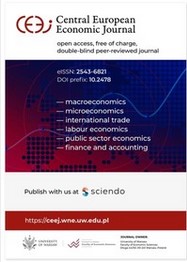The benefits of the Velvet Revolution in Armenia: Estimation of the short-term economic gains using deep neural networks
The benefits of the Velvet Revolution in Armenia: Estimation of the short-term economic gains using deep neural networks
Author(s): Yervand NahapetyanSubject(s): National Economy, Agriculture, Energy and Environmental Studies, Economic policy, Environmental and Energy policy, Economic development
Published by: Wydawnictwa Uniwersytetu Warszawskiego
Keywords: Armenia; revolution; GDP; neural networks; ensembling mechanism;
Summary/Abstract: Abstract This article primarily aims to estimate the impact of the Armenian revolution and test the hypothesis, that is, the benefits of revolution and establishment of democracy can be seen even in the first year after the political change. To calculate the short-term net surplus of the revolution, we estimated the difference between the projection of Armenian economic activity for the four quarters after the revolution, using only pre-revolutionary (assuming there was no revolution) and real data for the same period after the revolution. Using deep neural network models, such as recurrent neural networks and convolutional neural networks (CNN), we compared prediction accuracy with structural econometrics, such as autoregressive integrated moving average and error correction model, using pre-revolutionary data (2000Q1–2018Q1) for Armenia and combinations of models using an ensembling mechanism. As a result, CNN overperformed the rest of the models. The CNN simulation on post-revolutionary data indicates that during the period 2018-Q2–2019-Q1, Armenia gained approximately 850 million EUR in terms of GDP, thanks to the revolution and the new government. Moreover, out of seven models, the five best models in terms of accuracy indicated that the revolution had no negative impact on the Armenian economy, as the actual values were within or above the 95% confidence interval of the prediction.
Journal: Central European Economic Journal
- Issue Year: 6/2019
- Issue No: 53
- Page Range: 287-303
- Page Count: 17
- Language: English

